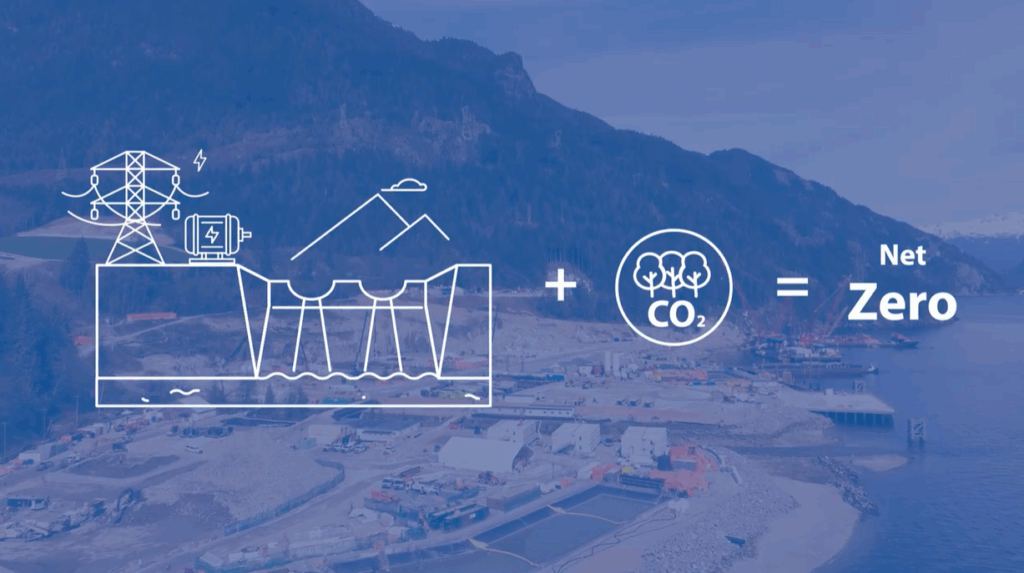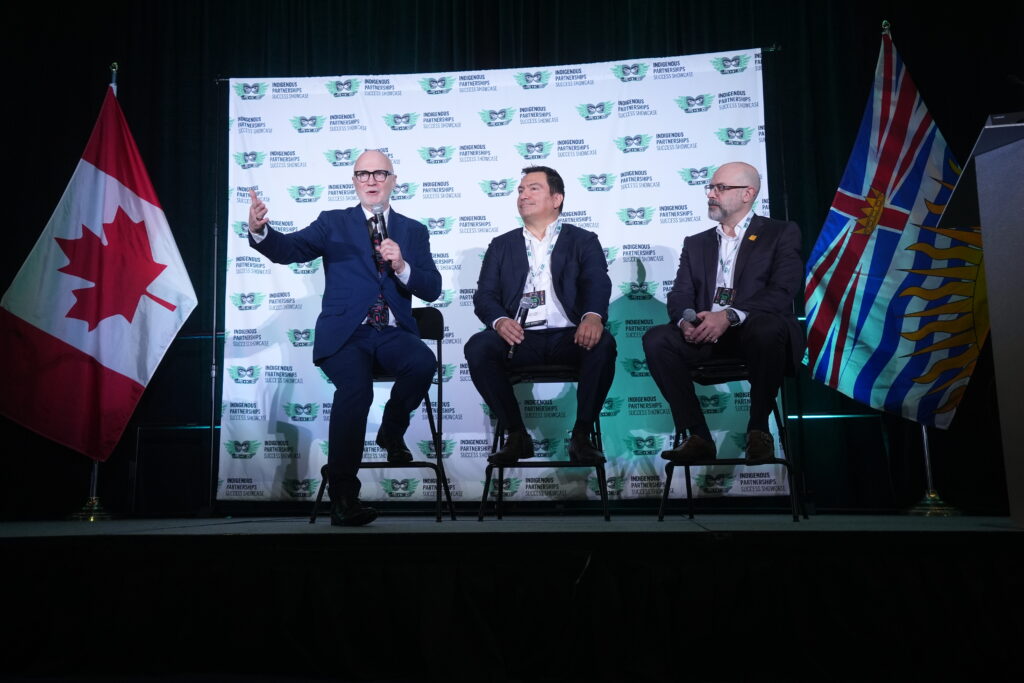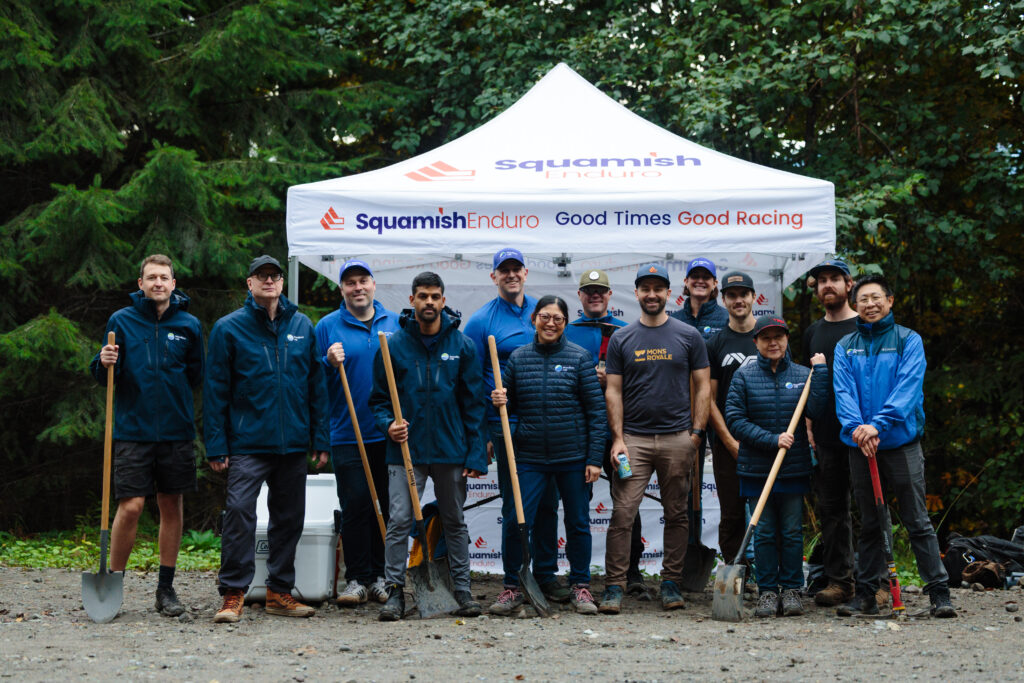News & Insights
Woodfibre LNG Highlights Energy and Indigenous Leadership at Global Energy Show
Jul 2, 2025
At the 2025 Global Energy Show Canada, industry leaders from around the world gathered to share insights, challenges, and ideas for navigating the complex path toward a more sustainable energy future. Among those contributing to the conversation was Woodfibre LNG, with CEO Luke Schauerte and Vice President Selena Basi taking the stage to share how the project has set a higher bar and where our product will play a role in Canada’s energy export future.
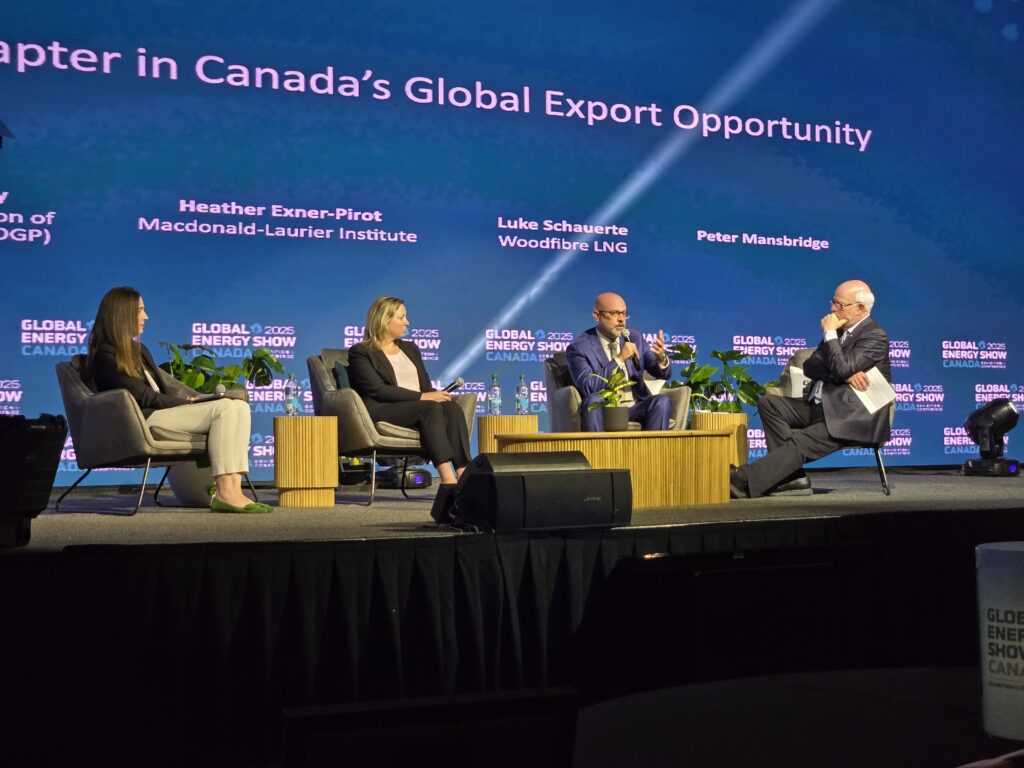
Luke Schauerte sits with Canadian broadcast legend to talk energy opportunities
Luke joined a marquee panel discussion moderated by Canadian journalism icon Peter Mansbridge. The panel—titled “What Is Canada’s Next Energy Export Opportunity?”—also featured energy and policy experts Heather Exner-Pirot and Elizabeth Komiskey, who joined the discussion in exploring how Canada can strengthen its position in the global energy economy.
Luke’s message was clear: liquefied natural gas (LNG) is the opportunity today, as well as tomorrow. LNG plays a critical role in reducing global emissions in a practical and achievable way, especially in regions like Asia, where demand for electricity continues to surge and coal-fired generation is still being expanded. LNG, he said, offers a viable, lower-emission alternative that can displace coal and reduce global carbon intensity today—without waiting for future technologies.
But Schauerte didn’t limit his remarks to market realities. He emphasized that Canada’s competitive advantage lies in doing energy the right way, with a focus on responsibility, collaboration, and Indigenous partnership.
“Canada has always been a provider to the world, offering what’s needed in critical moments,” he said. “Today, that means not only delivering lower-carbon energy, but doing so in true partnership with Indigenous communities who are helping to define the future of the industry.”
He highlighted how the LNG sector in British Columbia has developed as a standout example. At Woodfibre LNG, the Squamish Nation is not only a consulted party, but a governing partner as the first non-treaty Indigenous environmental regulator in Canadian history. This unique arrangement reflects a deep respect for Indigenous rights, environmental stewardship, and ensuring that development moves forward in alignment with Indigenous priorities and values.
Schauerte also pointed to the leadership of the Haisla Nation, majority owners of the Cedar LNG project and early beneficiaries of the LNG Canada project that it is readying its first cargo for export. “These are not peripheral agreements. These are nation-to-nation partnerships built on equity, long-term vision, and mutual benefit,” he said. “They demonstrate what’s possible when Indigenous communities are not just consulted, but empowered.”
Calling on industry and government, Schauerte urged Canada to lean into its strength in responsible energy production, and to recognize that its role in the global transition isn’t just about technology or resources—it’s about values. “We can help meet global demand, displace high-emissions fuels, and ensure that the energy transition delivers real benefits at home. But to do so, we must lead with integrity, inclusion, and partnership.”
One-on-one with Selena Basi on Gender Safety
Selena Basi, Vice President of Corporate Relations, brought her perspective to attendees at a session on Gender Safety, hosted by Katie Smith-Parent, an experienced energy professional and the Executive Director at Young Women in Energy (YWE).
From the start, Basi acknowledged the difficult history of extractive industries, particularly regarding the impact of industrial work camps on Indigenous communities and women. “We have to acknowledge that some very real and painful chapters exist,” she said. “And Indigenous concerns—especially from women—about safety around these sites are valid and deserve more than just acknowledgment. They deserve action.”
For her, the turning point came early in her time with Woodfibre LNG, when she witnessed several Indigenous women protesting passionately at a corporate event, singing and drumming to give voice to their concern. Their voices made the issue real—and personal. That experience was a catalyst for a deep shift in perspective and approach. The commitment to begin to address an issue from an Indigenous perspective to ensure their concerns were met ultimately led to the formation of the Gender Safety Committee, the cornerstone of Woodfibre LNG’s approach to gender and cultural safety.
That committee now serves as a model for how Indigenous leadership and local knowledge can shape project design and community engagement. “It was important that Indigenous women themselves had control over how gender safety was defined and protected in the project,” Basi emphasized.
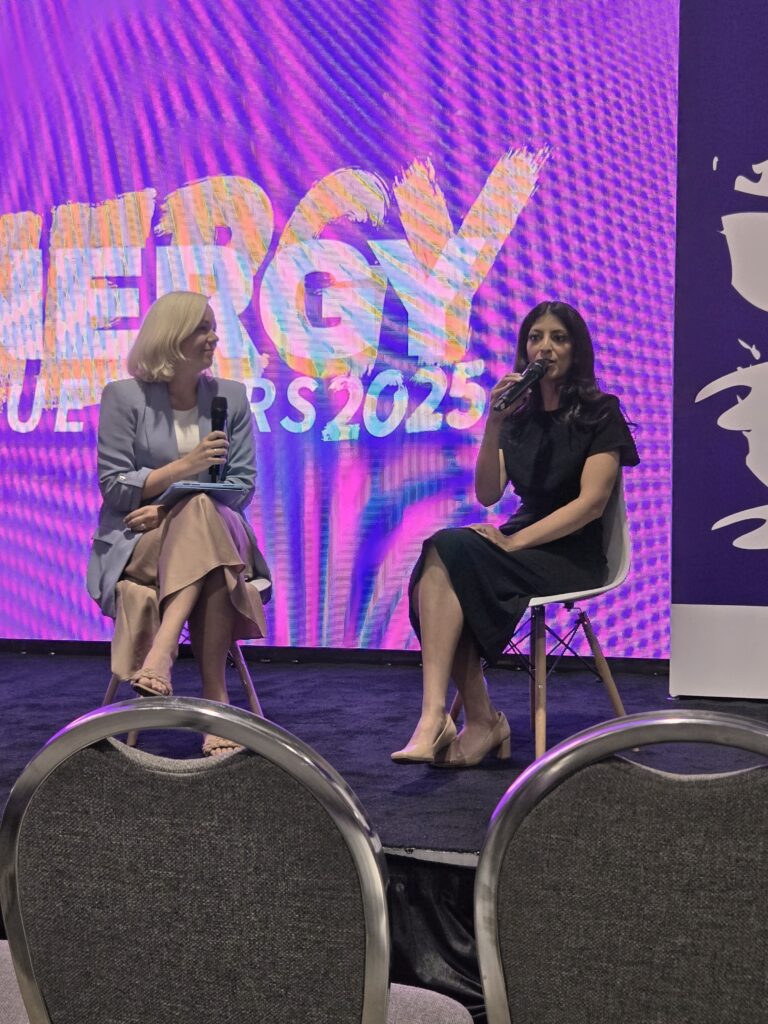
She shared three critical pieces of advice for other projects hoping to advance safety and inclusion:
- Co-develop programs with the community. Work with affected groups and ensure enough time and space for the uncomfortable conversations to happen.
- Don’t be afraid to get it wrong. Awkward or difficult feedback is often where the most important learning happens.
- Leadership matters—true change starts at the top. There must be executive commitment to making safety and inclusion non-negotiable.
A Broader Commitment to Advancing Important Conversations
Participation in the Global Energy Show was more than an opportunity to share project updates. It was a chance to contribute to a deeper, evolving conversation about how Canada can lead the global energy transition not just with technology—but with integrity.
That means embracing emissions innovation, forging authentic partnerships with Indigenous Nations, and making equity, safety, and inclusion core pillars of every decision.
